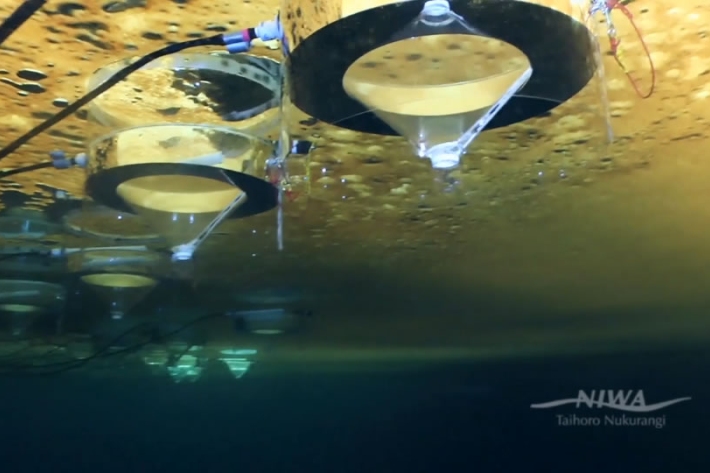-

Too much or not enough? Spotlight goes on UV research
News article11 April 2014Scientists, dermatologists, skin cancer experts and health professionals are among those meeting in Auckland next week to discuss the latest research into UV radiation and how best to improve public awareness of UV issues. -

Our World is Changing 9 April 2014
Our world is changing - here is some food for thought... -

Thin ice
In late 2013, a group of scientists from NIWA travelled to Antarctica to perform a series of experiments under the sea ice to look at how climate change and ocean acidification could affect this fragile ecosytem. -

NatHERS climate files 2012
The Commonwealth of Australia as represented by the Department of Industry (the Commonwealth) has developed Nationwide House Energy Rating Scheme (NatHERS) climate files 2012 compiled from Bureau of Meteorology (BOM) raw climate data and then used to complete a typical year for every NatHERS climate zone in Australia. -

NIWA scientists at sea
NIWA staff involved with the Louisville Seamount Chain voyage have wide ranging skills and expertise. -

Homeward bound
The Louisville Seamount Chain VME Voyage is now completed and we are on the long steam home, made challenging due to the weather. What happened to those sunny calm days we experienced on most of the voyage? -

Ice divers
A specialist dive team venture under the Antarctic sea ice to work on an ocean acidification experiment, and they bring back some breath taking video of the environment along the way. -

New Zealand facing greater weather extremes: international report
News article31 March 2014New Zealand will get hotter, have more heavy rainfalls, and experience more days when the fire risk is extreme, the latest international report on climate change impacts reveals. -

Ocean acidification and warming
Research ProjectAcidification of the world’s oceans from rising atmospheric carbon dioxide levels reduces the availability of carbonate required by some marine organisms to build shells and skeletons, and potentially affects their ability to maintain existing structures. -

Media advisory: climate change report
Media release25 March 2014Journalists are advised that the latest report from the Intergovernmental Panel on Climate Change (IPCC) is to be released in Yokohama, Japan at 1pm (NZ time) on Monday, 31 M -

International honour for NIWA scientist
News article25 March 2014NIWA scientist Cliff Law was today awarded the prestigious 2013 Hutchinson Medal, by the International Institute of Chemical Engineers. -

Statistical calculators
Online statistics tools, including a detection calculator, a kappa calculator and a Lin's concordance calculator are now accessible as Python 3.x code stored in Github.
